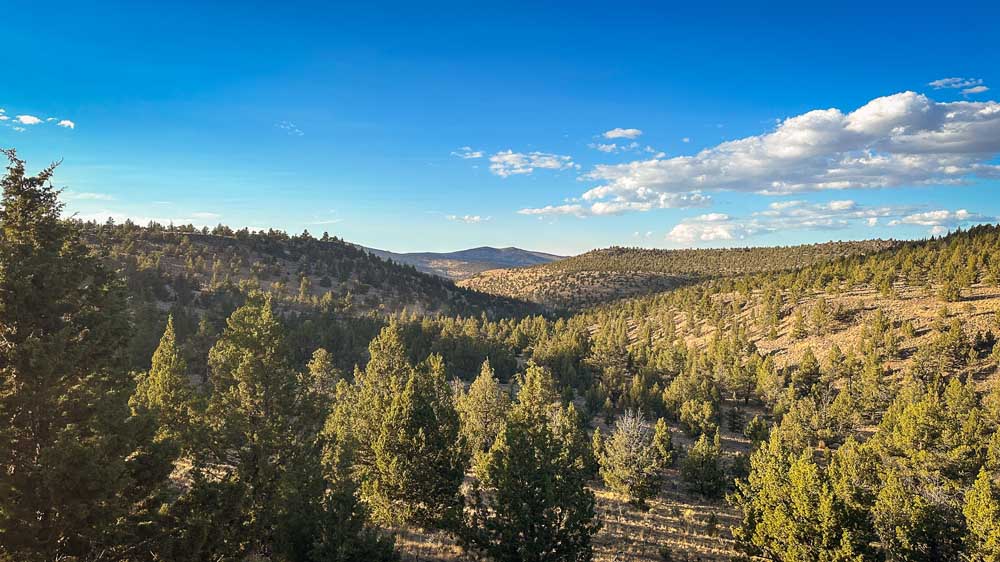Juniper clear cut bill designed to conserve groundwater
Published 2:41 pm Friday, May 30, 2025


A bill designed to thin out or eliminate juniper trees from potentially thousands of acres in rural parts of Central and Eastern Oregon is making its way through the state Legislature.
House Bill 3135 authorizes state-funded grants for soil and water conservation districts to conduct juniper removal projects. Crook, Jefferson, Deschutes, Harney, Wheeler, Klamath and Lake counties could all receive funding under the bill.
Ranching and grazing activity over the past century has disrupted natural ecosystems on the High Desert, causing some native plants to disappear and allowing the spread of juniper trees. While western juniper was present on the landscape before the homestead era, its distribution is believed to have been much less than today.
Trending
The main factor for the spread of juniper over the past century was the tilling and or grazing of soil. When cattle began to graze the land their hooves trampled on intact soil biotic crust, which opened a sort of pandora’s box of problems for the High Desert.
Once exposed, juniper berries found a way into the ground where they could germinate. Cheatgrass and other invasive annuals spread in the same manner.
“Junipers now have a stranglehold on much of the Intermountain West,” said Link Olsen, a native of Madras who is now a researcher at the University of Alaska Fairbanks.
“Thinning or eradicating them from areas takes years, if not decades, of determined effort. Cut one down and many more grow in its place, especially if you leave the ‘mother tree’ on the ground to provide a hospitable microclimate for its offspring,” Olsen added.
Some officials say the best way to halt the spread of junipers — and conserve groundwater that they would otherwise consume — is to remove as many of them as possible. State Rep. Vicki Breese-Iverson, R-Prineville, is sponsoring the bill.
“It only takes a handful of juniper per acre to drink hundreds of thousands of gallons of water,” said Reagan Knopp, a spokesperson for Breese-Iverson. “Rolling juniper back to 1800s levels will help prevent or lessen wildfires and increase available water in Central and Eastern Oregon.”
Trending
The bill — currently in the Joint Committee on Ways and Means — states that an initial amount of $5.27 million will be set aside for juniper removal.
The grants include $1.2 million for Crook County, $715,000 for Jefferson County and $585,000 for Deschutes County. The money will be sourced from the state’s general fund, which is derived from personal and corporate income taxpayers.
The funding will pay for the removal of some junipers in certain areas and subsequent monitoring of the impact of their removal on the watershed. The data will be reported back to the Legislature.
“We believe (the data) will show that juniper removal does conserve water that is badly needed in Central and Eastern Oregon,” said Knopp. “We hope to educate legislators and the public about the invasive and noxious nature of juniper and the downsides of how it has overtaken our landscape.”
Studies conducted by Oregon State University in the Camp Creek Watershed 60 miles southeast of Prineville, with observations made over more than a decade, showed that juniper treatments did improve streamflow and vegetation cover.
Juniper tree removal from 204 acres around Whychus Creek, funded by earlier legislation is also believed to have improved streamflow.
But not all watersheds are the same, so experts say juniper removal efforts should focus on where it makes sense to do so. The way the junipers are removed also impacts the soil and hydrology around it. Various methods are often used in combination.
Deschutes County Commissioner Phil Chang said conducting juniper treatments could improve ecosystems across Central Oregon and there could be multiple benefits, including hazardous fuels reductions and improving sagebrush steppe habitat.
But he is not convinced that going to war on every juniper makes sense. Removing juniper trees from the western side of Deschutes County, where groundwater levels are deep and the volcanic rock is permeable, may not conserve much water at all, he said.
“If the bill claims that juniper treatments are going to improve groundwater levels or flow in local creeks I would say that they are making a claim that is not supported by science,” Chang said.
“In Crook County, where Camp Creek watershed is, they can make these claims and have some basis. But here at the transition from the geology of the Blue Mountains to the geology of the east Cascades there is no research to support that claim.”












